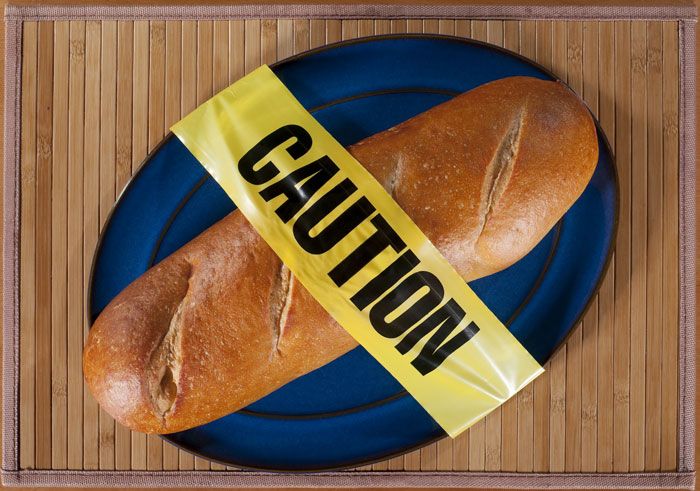
Photo Courtesy of iStockphoto/Thinkstock
If you haven’t been living under a rock for the past decade, then you’ve probably heard of gluten— particularly the gluten-free, celebrity and health nut diet craze. But while you may have started to avoid gluten like the plague, how much do you really know about it? First and foremost, gluten is a protein. It is found in foods processed from wheat, barley and rye, supplying protein to foods prepared from sources that contain it— as well as being used as an additive to foods that are low in protein. Spelt, triticale, kamut, faro, and einkorn also contain gluten, as they are so closely related to wheat. Gluten adds texture and chewiness to baked goods, and is used in many foods today to thicken and bind as well as add flavor.
As stated by WebMD, in recent years the gluten-free diet has become a way to boost energy, lose weight, help cope with ADHD, autism and other medical conditions— and even media mogul Oprah Winfrey claimed to briefly go gluten-free in 2008 as part of a 21-day cleanse.

While there are many that have hopped on the gluten-free bandwagon because of its recent popularity with Hollywood’s hip and thin, (Victoria Beckham, Rachel Weisz and Gwyneth Paltrow to name a few) according to CNN, those with celiac disease or wheat allergies actually have an intolerance to the protein and need to avoid ingesting it due to adverse reactions and gradual damage to their intestines. There are also cases of gluten sensitivity, in which people can experience similar symptoms to those with celiac, like stomach cramps, diarrhea and gas. For everyone else, gluten is not a “toxin” and is simply a protein part of a mixed diet. Photo Courtesy of iStockphoto/Thinkstock
The gluten-free fad has many people thinking that this is their quick fix to getting thinner thighs and a toned core. What is really taking place is you have far fewer opportunities to overeat since gluten-free dining gives you less options, Shelley Case, R.D., author of Gluten-Free Diet: A Comprehensive Resource Guide and a medical advisory board member for the Celiac Disease Foundation told Women Health Magazine.

Also, according to Case, many dieters tend to overlook the fact that just because something is gluten-free, doesn’t mean that it is calorie-free or fat-free. Many manufacturers will load up their product with fat and sugar in lieu of gluten to make sure that it remains tasty for the consumer. Registered dietitian and spokesperson for the American Dietetic Association, Dee Sandquist, says, “It can be very healthy, or it can be junk food.”
If you’re considering a gluten-free lifestyle, keep in mind that since gluten is used to thicken up foods and give them flavor, it can be found in a range of foods, so you will be removing more than just bread from your diet. Assuming you’re still set on going gluten-free, Marlisa Brown, R.D., author of Gluten-Free, Hassle Free, recommends doing it in a truly healthy way by avoiding the processed gluten-free goodies, instead opting for fruits, vegetables, lean protein and grains like quinoa. Photo Courtesy of iStockphoto/Thinkstock














